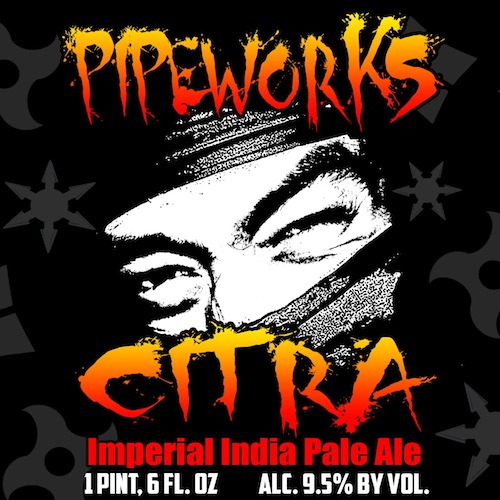The recent surge in US craft beer culture has been fueled, in part, by an avid interest in heavily hopped styles from both beer aficionados and casual drinkers. The push for more hop-centric beers has forced breweries to up the ante with their bittering additions, hopping techniques, and nomenclatures. Hop breeders have responded by producing a number of new varietals that defy what we had come to expect from this modest plant. These new hops are highly prized for their exceptional and unique aromatic qualities, and are often highlighted in the names of beers that include them. Beers like Galaxy, Nelson Sauvin, El Dorado, Mandarina Bavaria, and Azecca all immediately catch the eye and pique the interest of any hop head that should be so lucky as to see them on a draft menu or bottle list. Of these exceptional hops, there is one that can be considered the apotheosis of this new wave: Citra.
Jason Perrault released Citra in 2007, and the craft beer scene has never been the same. Citra was first bred in 1990 by Gene Probasco of John I. Haas when he crossed two unnamed hop plants that yielded a new varietal with a “special aroma.” The cross, dubbed X-114 and known only by this simple moniker for years, had an extremely convoluted lineage that featured Hallertau Mittelfruh, US Tettnang, EK Goldings, Brewer’s Gold, and an unnamed varietal in its parentage (FTLH, 85). X-114was sampled out to a number of breweries before Widmer Brothers, Deschutes, and Sierra Nevada co-founded extended acreage in 2007.
The Widmer Brothers quickly produced a draft-only brew featuring the X-114 and scooped up a Gold Medal for it at the World Beer Cup of 2008. Sierra Nevada released their first bottled product featuring the product (Torpedo) in 2009 (ABB V.32 No. 5). At this point, Citra had been renamed by hop farmer Jason Perrault and was becoming available to more breweries as acreage began to grow. The spotlight that was placed on Citra as a result of the Widmer Brothers’ and Sierra Nevada’s acclaimed beers quickly turned other breweries on to this new up-and-comer.
 In the years since its release, Citra has been featured as the sole hop in a multitude of nationally renowned Pale Ales and IPAs. The most recent example that comes to mind is Psuedo Sue, a Citra single-hop Pale Ale that has garnered as much attention as the Tyrant Lizard King its named after. Other notable examples include Three Floyd’s Zombie Dust, Pipeworks Citra Ninja and Hill Farmstead’s Citra Pale Ale.
In the years since its release, Citra has been featured as the sole hop in a multitude of nationally renowned Pale Ales and IPAs. The most recent example that comes to mind is Psuedo Sue, a Citra single-hop Pale Ale that has garnered as much attention as the Tyrant Lizard King its named after. Other notable examples include Three Floyd’s Zombie Dust, Pipeworks Citra Ninja and Hill Farmstead’s Citra Pale Ale.
Citra’s organoleptic profile and chemical composition lend themselves overwhelmingly to aromatic and flavor additions, either pre-boil, boil or post-boil. Citra has very high myrcene (60-65%) content when compared to other hops and this helps account for its unique aromatic profile. Myrcene, one of the four major hop oils, is heavily associated with citrus (BYO, VOL.17, No. 1), and can also be found in mangos, lemongrass, verbana and grapefruit. Citra is also high in geraniol and linalool, two compounds known to biotransform to create citronellol. Citronellol is associated with the citrus and tropical notes that have become so prized by brewers and drinkers alike (ABB Vol. 34, No. 2). Citra is not recommended for bittering additions. Despite its high alpha acid and low co-humolone content, brewers have commented on its harsh bitterness and almost catty character (BYO Vol. 17, No. 1). An excellent addition for late in the boil, the whirlpool, or dry-hopping, Citra has been known to lend a wide number of delicate and desired aromatics including gooseberry, lychee, mango, melon, grapefruit, orange rind and passionfruit.
Citra hops may have only been in the market for the past seven or eight years but it has had an incredible impact on the brewing and craft beer scene. Not since the development and release of Cascade has a hop varietal played such an integral role in the paradigm shift of a style or the establishment of aromatic expectations. The craft beer scene will not soon forget the introduction of those tantalizingly tropical and decadent aromatics and brewers will be requesting hops by comparing them to Citra for years to come.
References:
FTLH: For the Love of Hops: The Practical Guide to Aroma, Bitterness and the Culture of Hops. Stan Hieronymous. 2012
BYO: Brew Your Own Magazine
Volume 17, No. 1 by: James Spencer
ABB: All About Beer Magazine Volume 32, No. 5 by: Brian Yeager
Volume 34, No. 2 by: Stan Hieronymous
CB: Craft Beer & Brewing Magazine Volume 1, No. 1 by: Stan Hieronymous

Leave a Reply